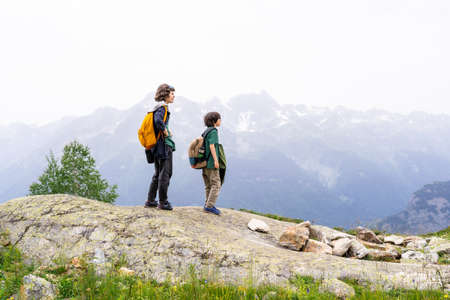1. Understanding Permit Requirements
When planning group hikes or guided expeditions on U.S. trails, understanding permit requirements is essential. Permits aren’t just a formality—they play a crucial role in protecting the environment and ensuring everyone’s safety. In the United States, many popular trails are located within national parks, national forests, or wilderness areas that have strict regulations for group activities.
Why Are Permits Needed?
Permits help manage the number of visitors on trails, which reduces wear and tear on fragile ecosystems and prevents overcrowding. They also ensure that groups follow Leave No Trace principles and other guidelines that keep natural resources safe. For guided trips, permits confirm that leaders meet certain qualifications and insurance standards, making outdoor adventures safer for everyone involved.
Main Reasons for Permit Requirements
| Reason | Description |
|---|---|
| Environmental Protection | Limits the number of hikers to prevent erosion, protect wildlife habitats, and preserve plant life. |
| Visitor Safety | Keeps trails from becoming too crowded and ensures emergency services can respond effectively. |
| Resource Management | Allows land managers to monitor use patterns and maintain trail quality. |
| Guided Trip Oversight | Ensures guides are certified and follow best practices for leading groups safely. |
Common Areas That Require Permits
- National Parks (e.g., Yosemite, Grand Canyon)
- Wilderness Areas (e.g., John Muir Wilderness)
- Popular Backcountry Trails (e.g., Pacific Crest Trail sections)
If you’re organizing a group outing or booking a guided expedition, always check the official website of the area you plan to visit. Permit rules vary by location and group size, so it’s important to start your planning early to secure the right permits for your adventure.
2. Types of Permits and Where to Apply
Understanding Different Permit Types
When planning a group or guided expedition on U.S. trails, it’s important to know which permit you need. The type of permit required depends on your group size, activities, and whether you’re part of a commercial operation. Here are the main types of permits you’ll encounter:
| Permit Type | Who Needs It | Purpose | Where to Apply |
|---|---|---|---|
| Wilderness Permit | Individuals & groups (usually 6+ people) | Regulates access to protected wilderness areas for overnight or day hikes | National Park Service, U.S. Forest Service, or BLM websites for specific locations |
| Commercial Permit | Guides, outfitters, organized tour companies | Allows for-profit groups to operate trips on public lands/trails | Land management agency overseeing the trail (NPS, USFS, BLM, etc.) |
| Special Use Permit | Groups with unique activities (events, research, filming) | Covers uses beyond typical recreation, like large events or media projects | Relevant federal/state agency based on trail location and activity type |
How and Where to Submit Your Application
The application process can vary by land agency and trail. Most agencies now offer online applications through their official websites. Some permits are available in advance by lottery or reservation systems—especially for popular trails like the John Muir Trail or Mount Whitney.
General Steps for Applying:
- Identify Your Trail: Find out which agency manages the area (e.g., National Park Service for Yosemite, U.S. Forest Service for Mt. Baker-Snoqualmie).
- Select the Correct Permit: Check if your trip is personal or commercial and what group size restrictions apply.
- Visit the Official Website: Most agencies have dedicated permit pages with instructions and application links.
- Submit Required Details: Be prepared to provide trip dates, participant numbers, itinerary, and sometimes proof of insurance (for commercial operations).
- Pay Fees: Many permits require non-refundable processing fees at the time of application.
- Wait for Approval/Confirmation: Some permits are issued instantly; others may take weeks or use a lottery system.
Useful Links for Popular Agencies:
- National Park Service (NPS)
- U.S. Forest Service (USFS)
- Bureau of Land Management (BLM)
- Recreation.gov – Centralized permit reservations for many federal lands
Please note that rules and processes can change each season. Always double-check requirements with the managing agency before finalizing your plans.

3. Group Size Limits and Restrictions
Understanding Group Size Rules on U.S. Trails
When planning a group or guided expedition on popular U.S. trails, it’s important to know that most parks and wilderness areas set specific limits on how many people can be in your group. These rules aren’t just red tape—they help keep the trails enjoyable for everyone, protect fragile environments, and ensure safety for both visitors and wildlife.
Why Are There Group Size Restrictions?
- Trail Preservation: Large groups can cause more erosion, trample vegetation, and widen trails, which leads to costly repairs and environmental damage.
- Leave No Trace Principles: Smaller groups make less impact and are better able to follow Leave No Trace ethics, like minimizing campsite disturbance and reducing noise.
- Wildlife Protection: Big crowds can disturb animals or even alter their natural behaviors, especially in sensitive habitats.
- User Experience: Limiting group sizes helps maintain the peace and solitude that make America’s wild spaces special.
Common Group Size Limits by Trail Type
The following table highlights typical group size restrictions on some of the most visited U.S. trails and wilderness areas. Always check with the specific land management agency for up-to-date numbers before you go.
| Trail / Area | Managing Agency | Maximum Group Size (Day Use) | Maximum Group Size (Overnight) |
|---|---|---|---|
| PCT (Pacific Crest Trail) | USFS/NPS/BLM | 12 | 8-12 (varies by segment) |
| John Muir Trail (Yosemite NP) | NPS | 15 | 8 |
| Grand Canyon NP Backcountry | NPS | 11 | 6-11 (varies by zone) |
| Zion Narrows (Zion NP) | NPS | 12 | 12 |
| Boulder Mail Trail (Grand Staircase-Escalante NM) | BLM | 12 | 12 |
| Crow Pass Trail (Chugach NF, Alaska) | USFS | No formal limit* | No formal limit* |
| Sierra National Forest Wilderness Areas | USFS | 15 | 15 (stock included) |
*Some remote areas may not have explicit group size limits but are still subject to Leave No Trace guidelines and permit requirements.
Special Notes for Guided Expeditions & Commercial Groups
- If you’re leading a guided trip, commercial outfitter, or youth camp, stricter rules often apply—including lower maximums or additional permit steps.
- Your guides may count toward the total group size—always clarify this with the permitting office when applying.
- If your group is too large, consider splitting into smaller teams with separate itineraries.
TIPS FOR GROUP LEADERS:
- Divide your group if necessary before hitting the trailhead—don’t wait until you’re already hiking to split up.
- Avoid congregating at rest spots or campsites; spread out to minimize your footprint.
- If unsure about restrictions, contact the local ranger station or land manager—they’re there to help!
Understanding and respecting group size limits is essential for preserving the beauty of America’s wild places for everyone who follows in your footsteps.
4. Key Timelines and Application Strategies
Understanding Permit Deadlines and Release Dates
When planning group hikes or guided expeditions on U.S. trails, knowing when permits become available is crucial. Many popular trails—like the John Muir Trail or Mount Whitney—use a lottery system or release permits on specific dates each year. Missing these windows can mean missing your adventure altogether.
| Trail or Area | Permit Type | Application Window |
|---|---|---|
| John Muir Trail | Wilderness Permit (Lottery) | February – March |
| Mount Whitney | Day & Overnight (Lottery) | February – March |
| Zion Narrows | Canyoneering Permit (Calendar Release) | 5th of month prior at 10am MT |
| Grand Canyon Rim-to-Rim | Backcountry Permit | 1st of month, four months in advance |
Seasonal Quotas and High-Demand Periods
Most U.S. wilderness areas set quotas to protect natural resources and ensure a positive trail experience. Peak season—typically late spring through early fall—means more competition for permits, especially for large groups or guided trips. Some areas also have daily entry limits, so flexibility is key.
Tips for Navigating Seasonal Demand:
- Avoid holiday weekends: These dates fill up quickly due to school breaks and national holidays like Memorial Day or Labor Day.
- Consider shoulder seasons: Early spring and late fall often have less demand but still offer fantastic experiences.
- Check mid-week options: Permits are easier to secure for Tuesday–Thursday starts versus weekends.
Strategies for Boosting Your Chances
The most coveted permits are often gone within minutes or awarded by lottery. Here’s how you can increase your odds:
- Create an account in advance: Register on Recreation.gov or the relevant agency site before permit day.
- Assemble group details early: You’ll need names, contact info, and sometimes vehicle details for all participants.
- Select multiple date options: Flexibility with start dates gives you more chances if your first choice is full.
- If using a guide service: Many outfitters pre-reserve blocks of permits—booking with them may guarantee access even during high-demand periods.
- Set reminders and alarms: Popular lotteries open at specific times; being ready right when it starts is essential.
Pitfalls to Avoid
- No last-minute changes: Some systems lock your application after submission—double-check everything before hitting submit!
- Avoid duplicate applications: Submitting multiple entries for the same group can get all applications canceled in some systems.
- Know refund policies: Not all fees are refundable if plans change, especially for group permits.
If you plan ahead, understand the process, and stay flexible, you’ll have a much better shot at making your group adventure happen on America’s most iconic trails!
5. Preparing Your Expedition for Compliance
Checklist for Permit Compliance on U.S. Trails
If youre organizing a group hike or leading a guided expedition on U.S. trails, making sure you meet all permit requirements is key to having a smooth and legal adventure. Here’s a practical checklist to help you stay compliant, covering essential documentation, safety protocols, and responsible recreation.
Permit Documentation
| Requirement | Details |
|---|---|
| Obtain the Correct Permit | Apply early through the managing agency’s website (e.g., National Park Service, U.S. Forest Service). |
| Group Size Limits | Double-check the maximum group size allowed; some areas cap groups at 8-15 people. |
| Counselor/Guide Info | List all leaders and guides on your permit application as required. |
| Proof of Payment | Bring receipts or proof of payment for all permits and fees. |
| ID and Registration | Carry government-issued photo IDs and any special guide certifications if needed. |
Safety Protocols
- Create an emergency plan tailored to your route and group size.
- Carry communication devices such as satellite messengers or radios, especially in remote areas.
- Ensure all participants are aware of trail regulations, wildlife safety, and Leave No Trace principles.
- Bring a well-stocked first aid kit and know how to use it.
- Check weather forecasts and have backup plans in case conditions change suddenly.
Responsible Recreation Guidelines
- Follow Leave No Trace ethics: pack out trash, minimize campfire impact, respect wildlife, and stick to designated trails.
- Avoid loud noises and respect other trail users’ experience.
- If guiding, set expectations with your group about behavior, rest stops, and eco-friendly practices before hitting the trail.
- Adhere to any seasonal restrictions (like fire bans or trail closures) listed on your permit or agency website.
- If your group includes children or first-timers, provide extra support so everyone follows the rules safely.
Quick Reference Table: Group Permit Essentials
| Step | Description |
|---|---|
| 1. Apply Early | Secure permits months ahead if possible—popular trails fill up fast! |
| 2. Confirm Group Roster | Finalize who’s coming and update permits if anyone changes last minute. |
| 3. Review Rules Together | Hold a pre-trip briefing so everyone knows what’s expected. |
| 4. Pack Documents & Kits | Bring digital/printed copies of permits plus safety gear for emergencies. |
Taking these steps will help you avoid fines or disruptions—and ensure that your outdoor adventure is safe, fun, and respectful to both the environment and fellow adventurers.
6. Consequences of Non-Compliance
Understanding the Risks of Skipping Permits
When planning group hikes or guided expeditions on U.S. trails, following permit rules is not just a formality—its required by law. Ignoring these regulations can lead to serious trouble for both organizers and participants. Below, we break down what can happen if you skip the necessary permits.
Potential Fines and Legal Issues
| Type of Violation | Possible Fine | Legal Impact |
|---|---|---|
| No Permit Obtained | $100–$5,000 (varies by location) | Citation; possible court appearance |
| Misuse of Permit (e.g., group size exceeds limit) | $50–$1,000 per person over limit | Revocation of current/future permits |
| Commercial Guiding Without Permit | $500–$10,000+ | Criminal charges; business license risk |
| False Information on Application | $250–$5,000 | Permit ban; further legal action |
Impact on Future Trip Planning
- Banned from Applying: Many agencies will block violators from getting future permits, sometimes for several years.
- Group Restrictions: If your group is caught breaking rules, everyone involved could face limits or bans.
- Tarnished Reputation: Guides and organizations found in violation may lose trust with clients and local land managers.
- Insurance Problems: Some insurers may refuse coverage for groups or guides with a history of non-compliance.
Why Following Rules Matters for Everyone
The permit system helps protect natural resources, ensures safety, and keeps trails accessible for all. When groups ignore these rules, it can lead to overcrowding, resource damage, and stricter regulations for everyone in the future. That’s why it’s so important to plan ahead and always follow permit requirements when organizing trips on U.S. public lands.

